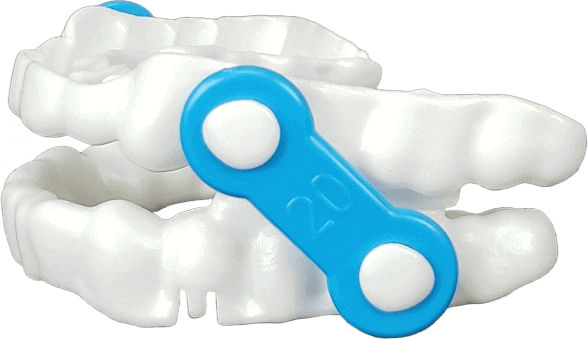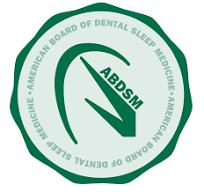10 Best TMJ Exercises For Pain Relief
Did you know it’s been estimated that up to 10 million Americans suffer from problems with their temporomandibular joint (TMJ), according to the NIH (National Institutes of Health) National Institute of Dental and Craniofacial Research?
Often, temporomandibular disorder (TMD) symptoms such as headache , ear pain , and teeth grinding (bruxism), as well as swelling, tight jaw, jaw pain, lock-jaw, and neck pain and strain mimic other conditions, making TMD difficult to diagnose unless you see a TMD specialist. When treatment is delayed, TMD conditions typically worsen and the pain and discomfort associated with TMD can erode your quality of life.
To make matters more complicated, permanent TMD relief, even when treated, can be tricky because your jaw joint (TMJ) works hard all day long as you talk, chew, and yawn. The complexity of your TMJ also plays a role. Connecting your jaw to your skull on each side of your head just below your ears, each TMJ works as a sliding hinge, moving back and forth, side to side, and up and down.
All this makes
TMD flare-ups a possibility. Luckily, there’s some good news, too. If you have TMD and are experiencing pain, tightness, or are having a TMD flare-up, you can do some simple exercises at home without any equipment to help reduce the duration, potentially from weeks to days, although each patient is unique, so this varies from patient to patient.
Exercises for Strengthening, Relaxing, and Stretching your TMJ
It’s said that “an ounce of prevention is worth a pound of cure,” which is why it’s important to take a few minutes out of your day to strengthen your TMJ. With diligent care to keep your TMJ in top condition, you can reduce symptoms and perhaps avoid flare-ups in the first place.
The ten exercises outlined below are designed to reduce symptoms and pain, although results may vary from person to person and are not guaranteed. And remember, always consult your dental care provider before beginning a TMJ exercise regimen.
TMJ Strengthening Exercise
Like most exercises, it is best to give your TMJ a workout when you are not experiencing elevated pain from a TMJ flare-up. Sit comfortably in a chair, keeping your back straight, then push your chin downward and place your thumb under it, exerting comfortable pressure with moderate force. While doing this, open your mouth and hold it open for five to 10 seconds.
For the next strengthening exercise, open your mouth as widely as you comfortably can, then place your index finger between your chin and lower lip. Push inward and close your mouth against the resistance.
TMJ Relaxation Exercises
A little stress reduction and relaxation is good for your overall well-being, and it can greatly benefit for your TMJ. This easy progressive relaxation exercise helps you become more aware of your body and its tension areas and enables you to practice consciously releasing this tension. Sit or lie comfortably in a supported position, then systematically tense and release tension from each muscle in your body working from your feet up to your head. Another way to relax and destress is to inhale slowly, letting your stomach expand instead of your chest, then exhale just as slowly. Repeat five to 10 times.
TMJ Stretching Exercises
- First, place the tip of your tongue on the roof of your mouth. Open your mouth as wide as you comfortably can and hold in this position for five to 10 seconds.
- Then, with the tip of your tongue still placed on the roof of your mouth, relax your lower jaw and glide out as far as it will go. Hold for five to 10 seconds.
- Next, with the tip of your tongue still on the roof of your mouth, glide your lower jaw back in as far as it will go .
- After this, slowly open your mouth as wide as it will comfortably open , keeping your tongue in a neutral position and hold for five to 10 seconds.
- Now open your mouth slightly and glide your lower jaw back and forth five to 10 times.
- Next, close your mouth and face your head forward. Glance to the right with only your eyes then extend your lower jaw to the left and hold for five to 10 seconds. Then look to the left with your eyes, extend your lower jaw to the right and hold for five to 10 seconds.
- Now place a thin object, such as a pencil, between your front teeth. Slide your lower jaw forward so the object rests between your back teeth and front teeth and hold for 20 seconds. As this exercise becomes easier, you can separate your front and back teeth with a wider object.
- Last but not least, place your tongue just behind your teeth on your hard palate and it relax there. Notice your teeth are slightly apart and lips closed. Slowly breathe in and out through your nose. Hold this position for six seconds between breaths, completing six repetitions.
How Often and How Long Should I Do TMJ Exercises?
Many people benefit from performing TMJ exercises a few times a day. If you have difficulty finding the time, try performing the exercises at least once a day or every other day. Always listen to your body and don’t push beyond the limits of what feels comfortable.
Get Help
If you suspect you have TMD or have been diagnosed and are seeking optimal treatment, schedule an appointment with Dr. Katherine S. Phillipsand find out how she can help you get relief. With a Master of Science in Orofacial Pain and extensive TMJ/TMD experience and expertise, she will develop a treatment plan that best fits your needs.
-2700x842-1920w.png)




















